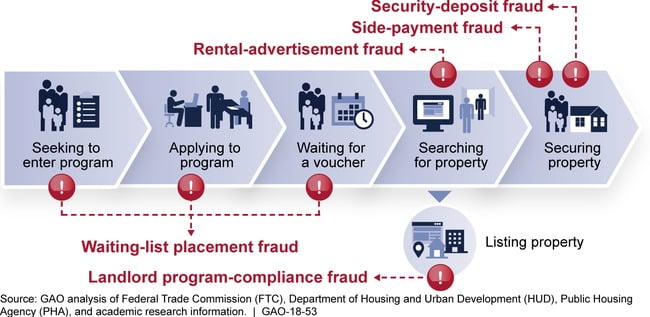Housing Voucher
Every family below a certain income level has a right to receive a housing voucher. It means that family would dedicate 30 percent of their income to housing costs, with the voucher paying the rest. The voucher can family use anywhere.
Landlords in most states of America are not obligated to accept families with housing vouchers.
In 2013, 1 percent of poor renters lived in rent-controlled units; 15 percent lived in public housing; 17 percent received a government support, mostly as a voucher. The rest 67 percent – 2 of 3 poor renting families – received no federal help.
Many economists believe that housing voucher program could be expanded to serve all poor families in America without additional spending if we prevented overcharging and made the program more efficient. (Matthew Desmond and Kristin Perkins, Are Landlords Overcharging Voucher Holders?)
In 2013, the Bipartisan Policy Center estimated that expanding housing vouchers to all renting families below the 30th percentile in median income for their area would require an additional 22,5 billion, increasing total spending on housing assistance to around 60 billion. The figure is likely much less, as the estimate does not account for potential savings the expanded program would bring in the form of preventing homelessness, reducing health-care costs, and curbing other costly consequences of the affordable-housing crisis. (Matthew Desmond, Evicted)
Great Britain, Netherlands and some other countries around the world have successfully applied similar programs and they plan to continue the program.

Right to Counsel
The program was tested from 2005 to 2008 in South Bronx and provided more than 1300 families with legal assistance and prevented eviction in 86 percent of cases. It cost around 450,000 but saved New York City more than 700,000 in estimated shelter costs alone. (Seedco, Housing Help Program, South Bronx)
In August 2017, the New York City passed the Universal Access law, that gives free legal assistance to low income tenants facing eviction process. The law is valid for 5 years (by 2022) and tenants who are over income, have at least the right to a consultation with an attorney.
The city’s FY 2018 budget included $15M for the first phase of the program, which is reaching 20 of the city’s 200+ zip codes.
The New York City is the first city in the United States that implemented a universal right to counsel for low income tenants facing evictions.
The right to counsel (RTC) in civil matters has been also established in France, Sweden, Azerbaijan, India, Zambia, and many other countries.

Rent Law
In June 2019, New York state approved several rent laws including rent control to strengthen tenants’ right. This package of laws redefines when and how landlords can raise the rent.
Tenants complain that landlords often provide construction they don’t need only to increase the rent and get rid of them. They call it construction harassment. According to new law, Division of Housing and Community Renewal must determine “schedule of reasonable costs” of allowable renovation and construction expenses.
Security deposit is limited to one month´s rent and landlord must return it within two weeks after tenants move out.
If the landlord wants to raise the rent by more than 5 %, he must to give to tenants at least 30 days´ notice.
Housing courts will more closely examine the consequences of evictions on the tenants´ health and school attendance of children.
Instead of 10 days to fix violations, tenants have now 30 days and application fees have been limited to $ 20.
The blacklisting of problematic tenants by landlords is now prohibited. In the case of illegal eviction, the landlord is liable to pay a fine of $ 1,000.



